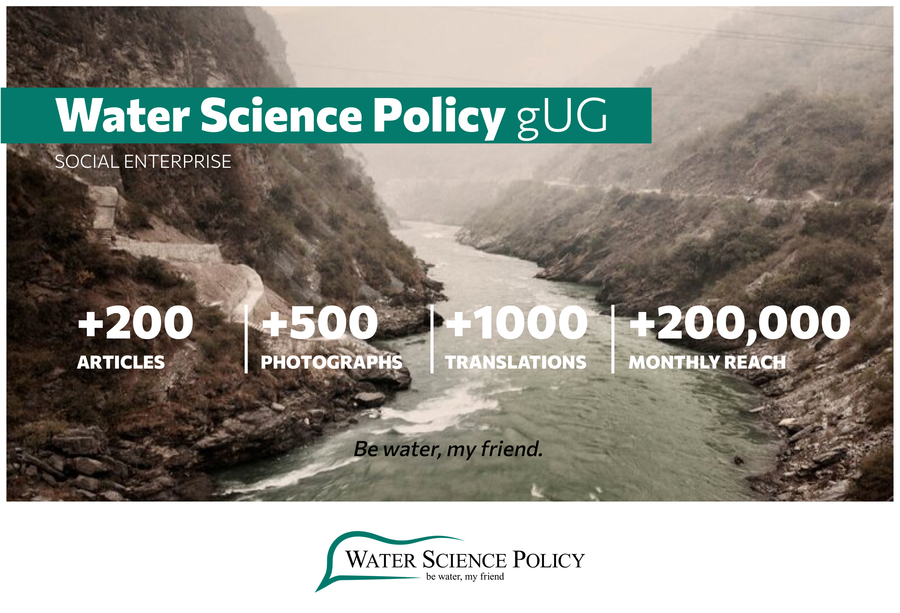Starting as an English-language blog in May 2020, Water Science Policy has expanded to offer stories in up to fifteen different languages based on the participation of over a hundred volunteers in over thirty countries. In addition to text, the platform provides content through stunning graphics, video, and audio. For 2022, I have brokered an agreement with Water Science Policy so that their writers and editors will provide tailored support for posts based on Eawag research. To date, posts have appeared on the topics of: stormwater overflows, river restoration, COVID tracking in wastewater, and fluoride in groundwater.
Is it worthwhile? The presence of Water Science Policy on Facebook, Instagram, LinkedIn, and Twitter benefits Eawag’s visibility. Metrics for just three of Eawag’s posts show that the articles have reached over 250,000 users and were interacted with over 10,000 times. I find it particularly valuable that Water Science Policy has a strong reach in Asia (60% of the geographic distribution) and in early to mid-career age ranges (30% for ages 18-24, 45% for ages 25-34, and 20% ages 35-44). My tweets of the Eawag stories on Water Science Policy platform have received over 100 likes and over 30 retweets. (Follow me @JanetGHering.)
If you are an Eawag researcher and would like to take advantage of this opportunity to increase the visibility of your recently published work, you can find more information on our internal SciComm webpage. If you are not an Eawag researcher, please approach Water Science Policy directly about becoming an author.
Working with a boundary organization, like Water Science Policy, complements the activities of Eawag’s own Communications Department. If academic research organizations like Eawag want to have broader visibility for our work, I am convinced that we need to cooperate with external partners in boundary organizations. Of course, this carries some risk since we no longer have complete control over our content. But when boundary organizations, like Water Science Policy, offer a high-quality product and can increase the accessibility of scientific knowledge, I think that this risk is worth taking. I also think that it is worth supporting financially (which I do as a private individual).
Graphic credit: Silvia Cardascia and Christian Fischer (2022). Used with permission.
Further information
Bednarek, A.T., Wyborn, C., Cvitanovic, C. et al. (2018) Boundary spanning at the science–policy interface: the practitioners’ perspectives. Sustainability Science, 13: 1175–1183, https://doi.org/10.1007/s11625-018-0550-9
Kappel, K. and Holmen, S.J. (2019) Why Science Communication, and Does It Work? A Taxonomy of Science Communication Aims and a Survey of the Empirical Evidence. Frontiers in Communication, 4 : 55. https://www.frontiersin.org/article/10.3389/fcomm.2019.00055
Science communication (2021) SCNAT, https://akademien-schweiz.ch/en/themen/wissenschaftskommunikation
Science communication, Wikipedia, https://en.wikipedia.org/wiki/Science_communication














0 Comments
No comments found!